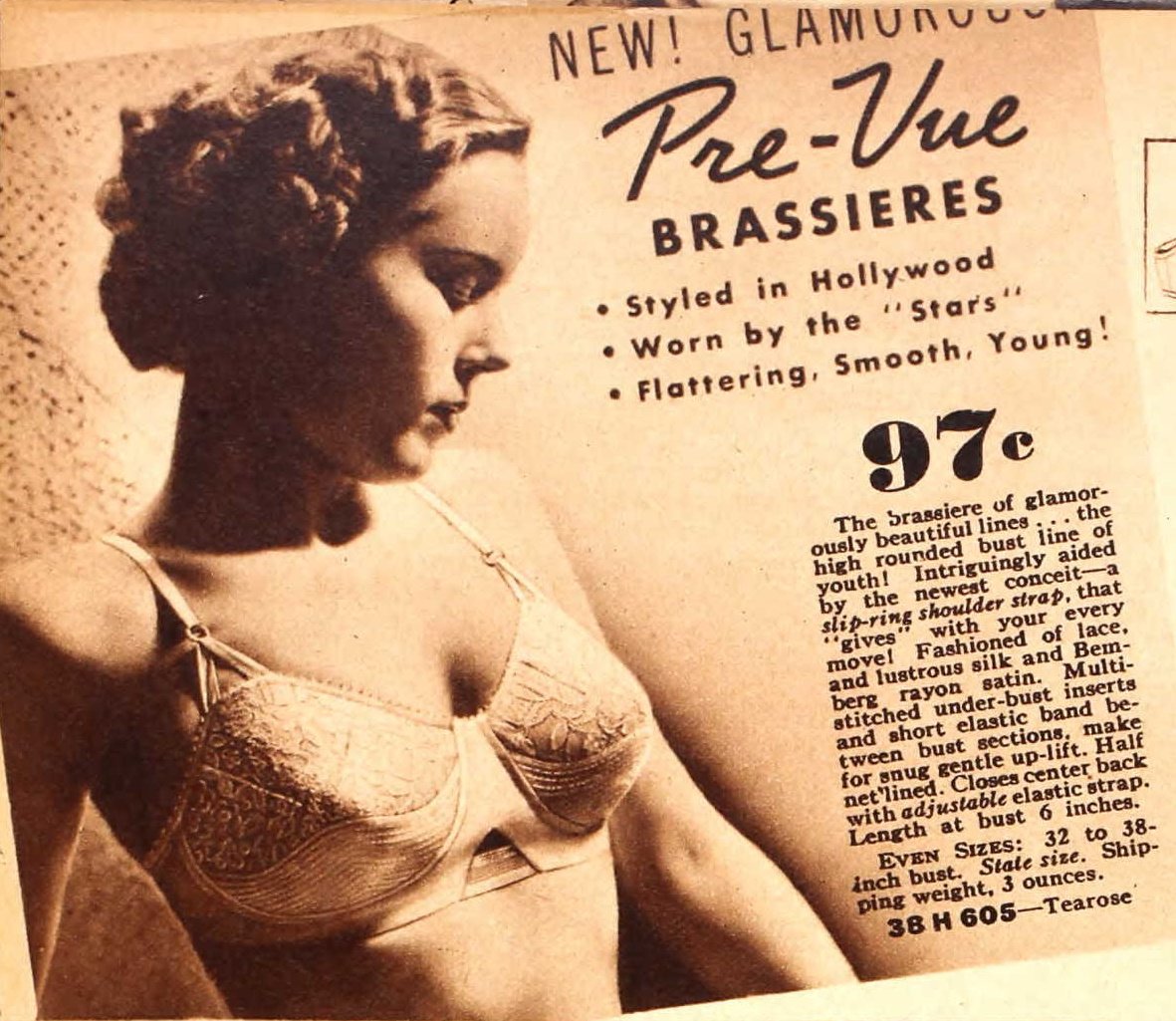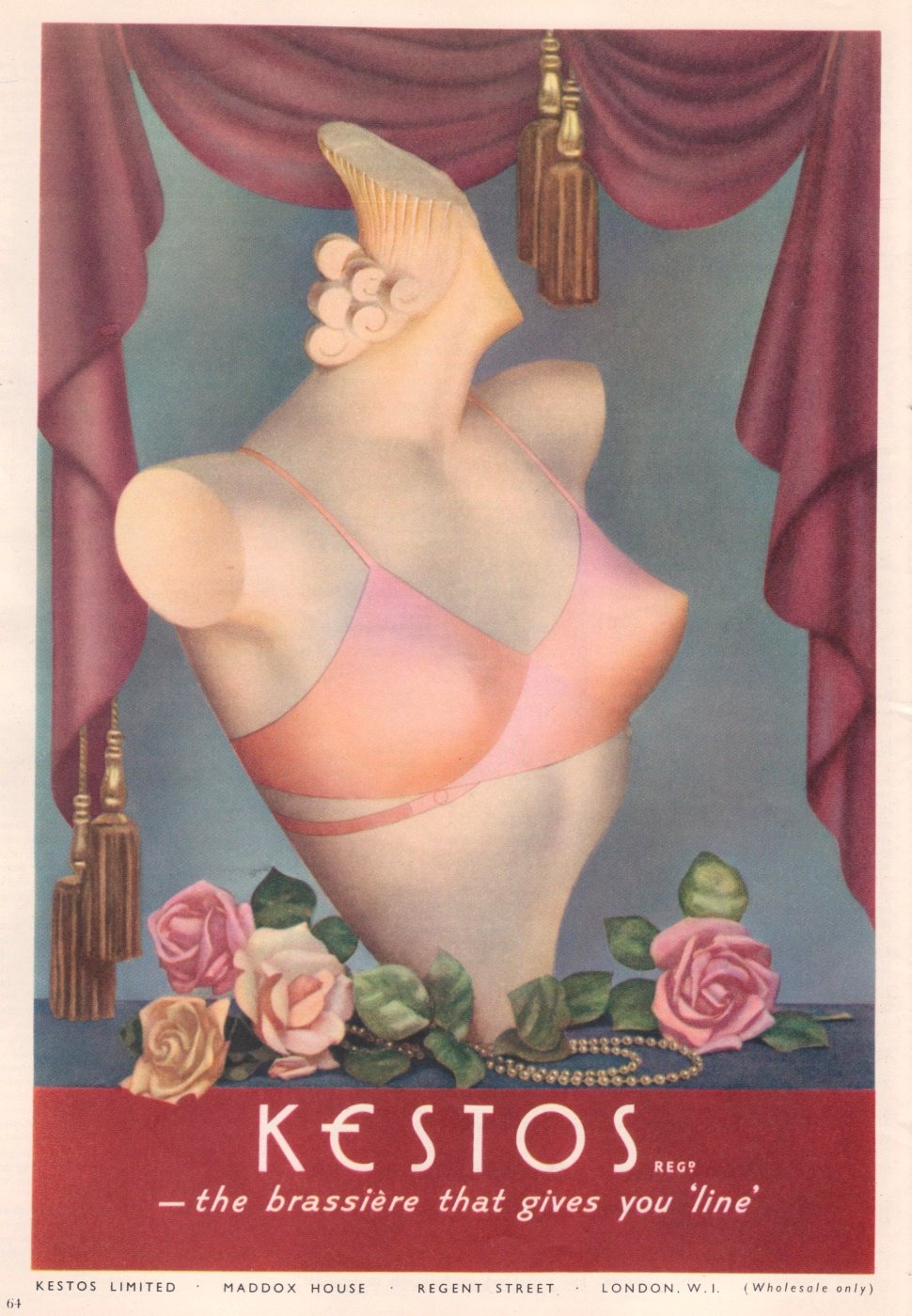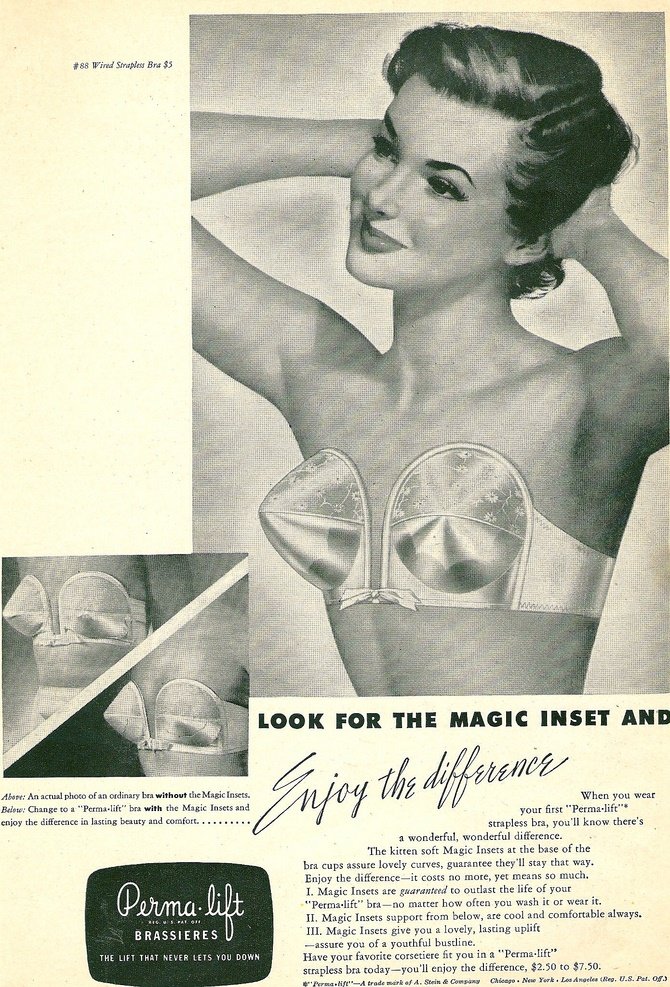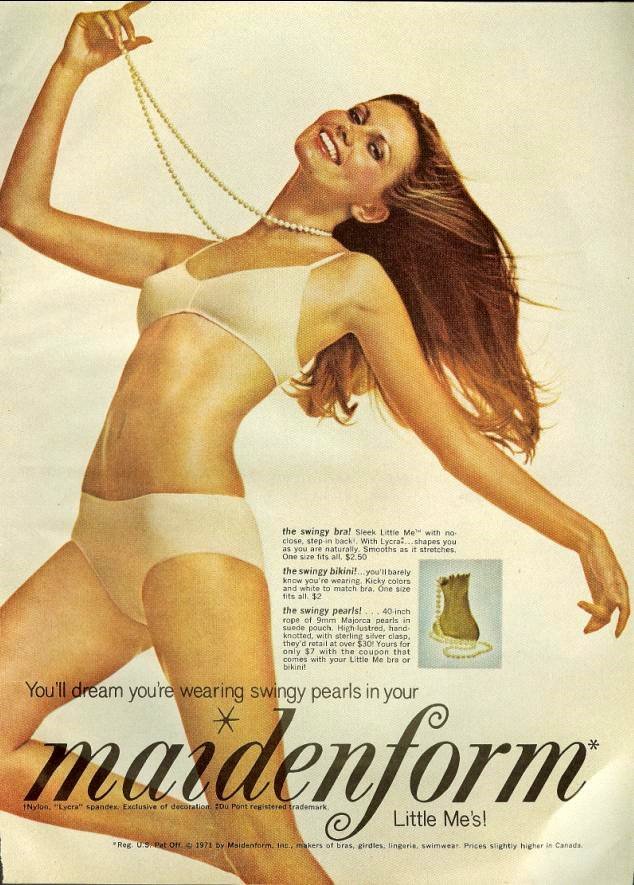I’m revisiting posts from the Tuppence Ha’penny archives, and in some cases updating and expanding the content.
There have been many fashion histories about the trends in attractive body shape. This one examines on the changing shape of a lady's frontage in the changing fashion silhouette - which is a subject close to my heart (as it were!)
Victorian Corsets Thrust the Bust High
During the Victorian era the focus was on the waist. A tiny waist was preferred, so corsets were worn and bust and hips emphasised with bustles and blousy designs to exaggerate the hourglass effect. Corsets pushed the breasts up and out, but their shape was really incidental to the overall silhouette.
1882 corset advert
The Edwardian Pigeon-Breast
The Edwardian period brought the S-shape silhouette. The flat-fronted corsets which thrust the hips backwards also lowered the bustline, neatly demonstrated in this illustration comparing the Victorian silhouette with the new shape:
Illustration in Ladies Home Journal, 1900
As the era wore on, the low, pigeon chest became more pronounced, with the bust spilling over low-fronted corsets or shaped and padded in "figure builder" brassieres.
Fashions in Home Notes, 1915
Flappers and Flat-O-Form
You can see in the late 1910s that the chest is getting flatter, with the blousing moving lower to just above the waistline. In the early 1920s the blousiness started to disappear from bodices entirely, and by the mid 20s the fashionable figure was completely flat-chested.
Fashions from circa 1925 - fashion illustrations from the era often depict women with a completely smooth line from chest to knee.
Lingerie was designed to help achieve this silhouette. Brassieres branded "Flat-O-Form", "Boyshform" and "Sta-Flat" promised to impart "that boylike, flat appearance, assuring a charm to the figure that is so desirable for the modern frock".
“Flat-o-Form” and “Sta-Flat” brassieres in the Sears catalogue, 1925
In the late 20s the angular boyish silhouette softened slightly into "slim yet rounded lines". By 1929 "uplift model" brassieres were available, though still far outnumbered by minimiser bandeau styles.
Brassieres in the Sears catalogue, 1929
Lift & Separate
These "rounded lines" filled out further still in the 1930s, so that by 1934 bust-enhancing bra padding was available to endow "the new full busted curves" upon the less voluptuous.
Maidenform had introduced shaped bra cups in the 1920s, and with the new curvier silhouette they gained popularity. By the late 30s a "high, rounded bustline" was desirable, and "lift and separate" was the key phrase in marketing the new cup-formed brassieres.
Bra with “gentle up-lift” in the Sears catalogue, 1938
“Separating Circles” bra in the Sears catalogue, 1939
The Bullet Bra
The naturalistic, rounded bust shape of the 30s and early 40s gave way to a more structured, pointed shape by the late 40s. Dior's New Look brought back small waistlines and the hourglass silhouette, so - just as in the Victorian era - bustlines and hips were exaggerated to enhance the effect. "Sweater girls" of the 40s and 50s like Marilyn Monroe, Jayne Mansfield, Lana Turner et al further popularised the pointy-boobed look. Bust padding was sometimes used to fill out the bullet shape.
Advert for Kestos bullet bra, 1950
Advert for “Perma-lift” padded strapless bra, 1952
Maidenform launched its phenomenally successful "Chansonette" bra (the model for the bullet bra by What Katie Did) in 1949. It went on to be the best-selling bra of the 1950s, with its "I dreamed I..." advertising campaign.
Advert for Maidenform “Chansonette” bra, 1962
Neat & Petite
The boxier fashions of the late 50s and early 1960s worked best on petite, small-breasted figures. This vogue for slender lines culminated in the Mod styles of the late 60s, with angular shift dresses and flat-chested models like Twiggy at the fashion fore.
Fashions of the early- to mid-1960s
The Natural Look
The late 60s and early 70s feminist movement reacted against 'restrictive' undergarments (though to be honest my bullet bra is one of the most comfortable I've ever owned) which moulded the body into shapes supposedly designed to please men. This heralded a return to a more naturally rounded shape, and bras were designed with light support and minimal structure.
Maidenform advert, 1971
Meanwhile, however, the push-up Wonderbra was gaining popularity, so it's hard to pinpoint a definitive fashion shape for the bust of the 70s. The fashion industry remained geared to the small-breasted, if the pattern illustrations of the era are anything to go by. However the silhouette was less prescriptive; many 70s styles, with their fit-and-flare shape, work on small- and large-busted figures alike.
Fit and flare fashions of the early 1970s
1980s and Beyond
After the 70s the fashion bosom continued to rise and fall like the tide - the 1980s saw volume added everywhere with shoulder pads and blousy bodices. The 90s brought us waif chic and flat chests on the catwalk, while on the high street Wonderbra and Ultrabra sales soared. Right now, buxom curves seem to be enjoying a trend, and the body positivity movement is making headway into encouraging clothing designers and brands to embrace all body shapes and sizes.























